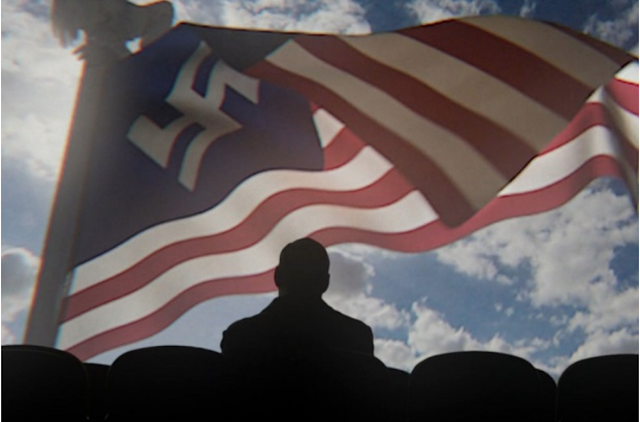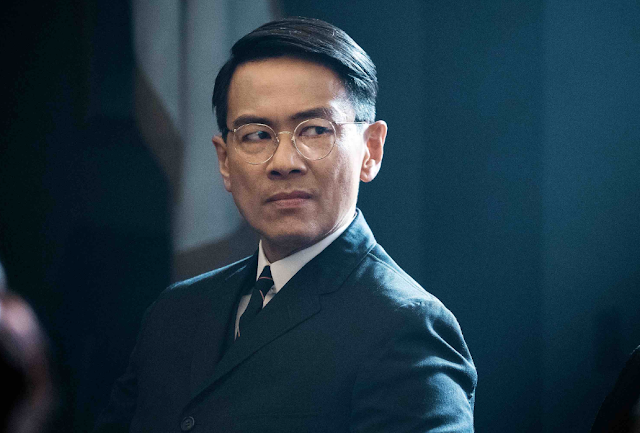
If you haven’t been following The Man in the High Castle, you should go over to Amazon and binge its first three seasons to fully enjoy the Emmy-worthy performances of Joel de la Fuente and Cary-Hiroyuki Tagawa.
In the previous three seasons, it has been wonderful to watch the growth and depth of characters of Inspector Chief Inspector Takeshi Kido of the Kempetai played by de la Fuente and Tagawa’s portrayal of Nobusuke Tagomi. Like peeling an onion, the characters have grown in complexity through the first three seasons: Initially villains, the audience can come to know their humanity and sympathize with the contradictions and difficulties the characters must face.
With the luxury of several seasons to develop their characters, both acting veterans Tagawa and de la Fuente give us a tour de force performance with the best rounded depictions of Asians and Asian Americans on US television.
Amazon’s The Man in the High Castle is based on Philip K. Dick’s Hugo Award-winning 1962 alternative history novel. The series explores the world that would have resulted if the Allied Powers had lost World War II. America and much of the world have now been split between global dominating powers Japan and Germany. As tension mounts between the two, resistance builds against the oppressive regimes amid questions over what is real and what is not.

Because of the heavy Japanese presence in the story, there are lots of opportunities for Asian American actors. It would have been easy to slide into stereotypes. Thank goodness, de la Fuente and Tagawa are so good at their craft that were allowed to depict parts of their characters that unveil glimpses of their suppressed humanity.
Kido is the Chief Inspector of the Japanese secret police in San Francisco. It is his job to keep the Pacific States safe by whatever means necessary.
“I really responded to the character,” de la Fuente tells Parade magazine. “I just felt like I was very interested in approaching someone who is such an archetype from the beginning, down even to when he is first described in scripts, ‘Man with the Round Glasses,’ which is such an image so much to the point that it can be considered as a stereotypical image of Japanese during the war. So I was really intrigued with the idea of trying to take that character, and trying to imbue him in a way that made him more well-rounded as the series went on. I thought that was an interesting challenge.”
Kido “can be quite striking in appearance once you see that hat and that coat and particularly the glasses. I think a little bit like when you hear Darth Vader breathing, or you see his cape or his mask; It should send a specific message initially.”
In the final season, we get to see more facets of Kido, says de la Fuente, “You think you know who he is; and then he veers away from that.”
“Some of where he goes is a huge surprise,” he shared. “Here’s a spoiler. You see Kido in his pajamas … Don’t tell!”

Nobusuke Tagomi is an unusual Japanese character, in that Japanese are, in reality, very conservative and sublime outwardly, but inwardly there’s so much going on,” says Tagawa. “A volcano’s worth of emotion and depth of spirit. This depiction isn’t one we’ve really seen in Hollywood so far. It’s probably the most in-depth character I’ve played, which excites me to no end, but it also offered me the opportunity to draw on being Japanese” says the actor.
“I’ve had a slightly different experience than most Asian and Asian-American actors in Hollywood. I was born in Tokyo, left when I was 5, and was raised in the U.S. on a U.S. Army post during the 1950s and 1960s, at a time when it wasn’t real popular to be Japanese — because of the war, of course — and really had to sort of roll my own reality and make some decisions at a very young age about how I wanted to proceed in what was a … complicated experiment,” Tagawa laughs.
“Tagomi represents very much of that kind of East-West energy, being Eastern in a Western environment, albeit an environment that is an occupied U.S. environment. He speaks English, he carries on with diplomats, he’s very much in the Western world and feels very much from an Eastern perspective,” says Tagawa, who was born in Japan.
“The East-West paradigm is nothing new to me—it’s something I’ve dealt with my whole life—so that really gives me an opportunity to represent it at a very deep level and provides a very wide perspective of being in America and being Japanese,” he says.
The final season is troublesome to some regular viewers (No spoilers here). Suffice it to say, to jump into the story at Season 4 would be difficult for newbies. To understand the complicated plot and all the overlays and intertwining of character story lines, it would be best to binge the earlier the seasons, or at least the recaps of each season available on You Tube. Perhaps because it is housed in a streaming network, or perhaps audiences don’t like to dwell in the dark world of Castle, it is a shame that not enough people have seen this show, simply for the performances by its entire cast, but also for the moral quandaries the characters have to resolve and we, the audience, need to ask ourselves, “what would we do” if faced with those difficult choices.
Although it is set in an alternate reality, some of the situations and themes seem to reflect what is happening in this country today. It is fantasy, but its frightening to think that that fictional fascist world it depicts is only an election or tweet away from reality. The world – or worlds – in which the story takes place is not as black & white as it first might seem. That includes the characters portrayed by de la Fuente and Tagawa, who have taken their Asian characters to a level rarely seen on American television.
The Man in the High Castle’s final season can be viewed on the Amazon network. It’s worth binging this winter as you’re holed up against winter.
AsAmNews has Asian America in its heart. We’re an all-volunteer effort of dedicated staff and interns. Check out our new Instagram account. Go to our Twitter feed and Facebook page for more content. Please consider interning, joining our staff or submitting a story.



